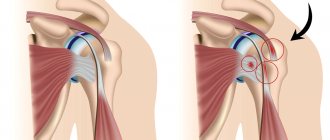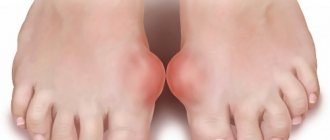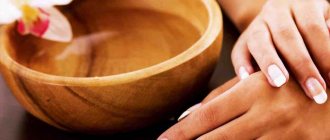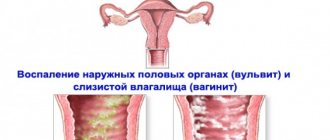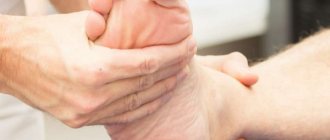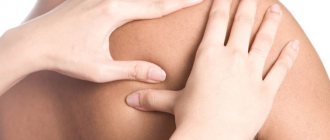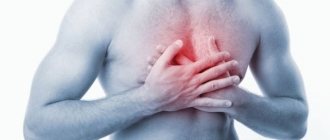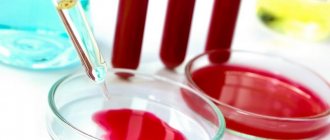Arthritis of the fingers is more common in older people. But it is also diagnosed in very young patients after injuries to the metacarpophalangeal and interphalangeal joints. Clinically, arthritis manifests itself as severe pain, swelling, and limited mobility. To eliminate these symptoms, predominantly conservative treatment methods are used. But with severe deformation of the joints of the fingers, surgical intervention is required.
How to treat arthritis in fingers
According to world statistics, more than 30% of the adult population of the planet know firsthand what arthritis of the fingers is.
This disease is caused by inflammation of the joint of an infectious, autoimmune, metabolic or rheumatic nature. Rheumatoid arthritis is diagnosed several times more often in women than in men. This is explained by the increased load on the small joints of the fingers during painstaking work around the house, when caring for children, at work, etc. The occurrence of an inflammatory process in the joints is always preceded by provoking factors, which we will discuss below.
Also in this article we will consider methods of prevention, symptoms and treatment of arthritis of the fingers.
Prognosis and prevention
It is necessary to pay attention to even small manifestations of inflammation. Most types of arthritis can be easily cured if treated early. And even its incurable forms, such as rheumatoid or psoriatic arthritis, can be made less dangerous. Proper treatment will help slow down the destruction and deformation of joints and make remission last longer. Indeed, over time, the disease can lead to complete limitation of movements. As a result, the patient will not be able to dress, eat, or care for himself.
Therefore, you need to try to prevent the development of arthritis. To do this, treat all infectious diseases in time, play sports, but avoid physical overload and hypothermia. Nutrition should be complete, providing the body with all nutrients.
Arthritis of the fingers is considered a harmless disease, although it causes serious suffering. Without treatment, it can lead to complete loss of hand mobility and disability. Only timely treatment and compliance with all doctor’s recommendations will help get rid of the disease and restore joint mobility.
Causes of the disease
Arthritis is an inflammation of the joint capsule, a change in the composition and an increase in the amount of fluid inside the bursa, causing the joint to swell. The joint capsule can fill with serous, purulent or bloody fluids, which provoke inflammation of the finger joints.
Let's look at the main causes of joint disease. Arthritis develops under the influence of such negative factors as:
- mechanical damage and injury;
- age-related changes;
- hormonal disorders;
- increased load on the joints of the hands (working at a sewing machine, computer, tennis, etc.);
- genetic predisposition;
- autoimmune disorders;
- hypothermia;
- incompletely cured infectious diseases (staphylococcus, ARVI, influenza, tonsillitis, tuberculosis);
- metabolic disorders (diabetes mellitus, gout);
- increased levels of uric acid (purines) in the blood;
- allergy;
- severe stress;
- sexual infections.
Why does rheumatoid arthritis develop?
Rheumatoid arthritis is a chronic degenerative disease characterized by inflammation of the synovial membrane (nurture, protect and cover cartilage), joints and surrounding tissues. Sometimes the disease has an extra-articular origin and damages internal organs and systems - the heart, kidneys and lungs. Therefore, among other things, arthritis is also a systemic disease.
Inflammation of the membrane is characterized by pain, distinct visible swelling, a feeling of stiffness, especially in the morning, and loss of joint mobility.
This disease affects the joints more strongly than the rest of the human body, mainly the most mobile ones, such as the arms and legs, elbows, shoulders, hips, knees and ankles, and fingers.
The cause of the disease is unknown. Infections, bacteria or viruses have been studied for a long time. And although in some cases it was possible to trace certain connections between them and the disease, there is no exact evidence.
Rheumatoid arthritis is an autoimmune disease of unknown etiology that affects the joints and internal organs
Experts believe that rheumatoid arthritis of the hand may have a genetic origin, as the immune system attacks the joints without recognizing them as its own, causing them to become inflamed. The phenomenon is known as an autoimmune disease. In addition, it is believed that certain proteins that are inherited may predispose to the disease.
Differences in the incidence of the disease lead experts to also suggest that there are environmental factors that interfere with the onset of the disease.
If the inflammation remains progressive and uncontrolled, it will cause damage to the bones, ligaments and tendons around the hand, which in turn will likely cause progressive joint deformity and loss of ability to perform daily activities and movements. All such manifestations affect the quality of life of patients.
Types and stages
Arthritis in the hands, a photo of which you will see below, develops gradually. The initial stage of the disease is asymptomatic, which significantly complicates early diagnosis.
The main sign of incipient inflammation in the joints is morning stiffness, which prevents you from brushing your teeth or unscrewing the cap of a bottle. The sensation is accompanied by aching pain, but quickly passes, so many patients do not pay much attention to this important symptom.
At the second stage, the disease provokes enlargement of the joints of the fingers, acute pain, crunching and creaking.
It becomes more difficult for a person to do work with his hands, this prompts him to seek advice from a specialist.
At the third stage of arthritis, pain in the joints becomes intolerable, the fingers are deformed symmetrically on both hands. A characteristic sign of arthritis is local redness and increased body temperature in the affected area.
There is a deposition of salts in the joints, the formation of bone growths that inhibit the functionality of the fingers.
The last, fourth, stage of arthritis cannot be treated conservatively, since the joints are so deformed that the fingers are immobilized. A person is not able to independently hold cutlery, button clothes, comb his hair, shave, etc. The cause of finger deformation is the destruction of interphalangeal cartilage and bone fusion.
Note. There are several types of this disease. Depending on what type of inflammation is underlying, certain symptoms appear.
Let's look at the types of this disease and their brief characteristics:
- infectious (develops against the background of an infectious lesion of the synovial bursa);
- metabolic (associated with metabolic disorders in the body);
- rheumatoid (systemic disease of internal organs and the musculoskeletal system, caused by an autoimmune reaction);
- post-traumatic (is a complication of joint injury and long-term immobilization);
- primary or secondary (arthritis can be a consequence of some earlier pathology and be its complication or develop independently);
- juvenile (a chronic disease that affects the joints of children and adolescents under 16 years of age);
- acute (foci of inflammation appear unexpectedly, the disease rapidly progresses);
- chronic (the disease develops in a latent form with rare exacerbations).
In order to diagnose and successfully treat the disease in time, you need to know how arthritis of the fingers manifests itself:
- morning stiffness;
- creaking, crunching, clicking;
- swelling;
- tightness, shine, redness and increased skin temperature in the area of the hands;
- weather dependence;
- symmetrical deformation of joints.
With infectious arthritis, there is general malaise and poor health, weakness, dizziness, chills, and sudden weight loss.
Types of pathology
Arthritis includes more than 100 rheumatic diseases and conditions, with arthrosis being the most common. Other common forms include lupus, fibromyalgia and gout. Common symptoms consist of pain, stiffness and inflammation in and around the joints. Some forms of the disease, such as rheumatoid and lupus, can affect various organs and cause general symptoms (fever, dizziness, etc.).
One way to distinguish rheumatoid arthritis from other types of disease is by the pattern of the affected joints. For example, rheumatoid affects the wrist and many joints of the hand, but does not affect the joints closest to the nails. In contrast, osteoarthritis, a more common type of disease, most often affects the joints closer to the nails than other areas of the hand.
The disease belongs to the category of autoimmune disorders, which are associated with improper functioning of the immune system.
Joints that may be affected by RA include:
- elbows;
- shoulders;
- neck;
- jaw;
- hips;
- knees;
- ankles;
- legs.
Rheumatoid arthritis usually does not affect the spine, with the exception of the neck. Another important feature of RA is that the joints are affected on both sides of the body. That is, if the knuckles of your right hand are inflamed, it is likely that some of the joints in your left hand are also at risk.
The overall picture of the affected joints, along with certain results in laboratory tests or X-rays, allows the doctor to distinguish RA from other conditions.
Diagnostics
The first thing to do if your finger joints hurt is to seek help from a therapist or rheumatologist-orthopedic surgeon.
After questioning and examining the patient, a primary diagnosis will be made, which is confirmed after a full examination of the body using instrumental and laboratory methods: ultrasound, x-ray, CT, MRI, arthroscopy, pleural puncture, biochemical tests of urine and blood.
Once the nature of the arthritis is established, the doctor will prescribe effective medications.
How to cure
A timely diagnosis allows you to begin treatment at an early stage of the disease, prevent surgical intervention, accelerate the restoration of damaged tissues and prevent their further destruction.
To eliminate inflammation, swelling and pain of several or just the thumb, drug treatment for arthritis is prescribed.
Tablets and injections
Drug treatment is an important part of arthritis therapy , since the inflammatory process affects not only the articular surfaces and cartilage, but also other elastic connective tissues present in the internal organs.
Therefore, local medications in the form of ointments are not enough; it is important to take anti-inflammatory drugs orally.
In the acute phase, NSAIDs help eliminate unpleasant symptoms: Ibuprofen, Diclofenac, Nurofen, Ibuklin, Ketoprofen.
Restoration of cartilage tissue takes a long time (on average 6 months) and requires constant stimulation of the production of new cells by taking chondroprotectors (Dona, Teraflex, Artra) and calcium supplements.
The lack of nutrients in the joints is caused by deterioration of blood circulation as a result of cartilage deformation . Drugs that dilate blood vessels, thin the blood and stimulate blood circulation in the injured area (Trental, Actovegin) come to the rescue.
Infectious lesions are treated with antibiotics and corticosteroids, which are selected individually for each clinical case.
Locally, to eliminate swelling and pain, you can use gels and ointments with anti-inflammatory and analgesic effects (Nise, Voltaren, Fastum, Diclofenac, etc.).
Having figured out how to treat deforming arthritis of the hands with drugs, the second step the patient should take is to pay attention to their diet.
Doctors recommend that during treatment (from 3 to 20 months) adhere to a vegetarian diet , which excludes animal products with the exception of natural dairy and fermented milk, as well as honey.
It is also recommended to increase the amount of fresh vegetables and fruits in your diet and reduce the heat treatment of foods. However, not all vegetables, fruits and grains are beneficial for arthritis patients .
You will have to exclude such food groups from your diet as:
- meat, fish, deli meats and canned food;
- hot spices;
- nightshades (tomatoes, eggplants, peppers, pumpkin, zucchini);
- margarine and cooking fats;
- alcohol;
- green leafy vegetables rich in purines (sorrel, rhubarb, spinach, onions);
- chocolate;
- legumes (chickpeas, peas, soybeans, lentils, etc.);
- coffee, cocoa, tea, chicory.
You should eat small meals, but no more than 5 times a day. Drink water in an amount of 20 ml per 1 kg of body weight. It is important to control the amount of purines (uric acid) in the blood and the level of sucrose.
Folk remedies
Grandmother's recipes can also help with arthritis of the fingers. However, they provide only short-term relief, relieving symptoms, and are not able to affect the root cause of the disease.
Read also: How to treat rheumatoid arthritis
Attention ! Before treating finger joint arthritis at home, consult your doctor! Self-medication often leads to a sharp deterioration in health and rapid progression of the disease.
The following traditional medicines are popular as symptomatic therapy:
- potato tincture (grate 1 raw potato on a fine grater and pour 1 glass of 2% kefir, after 10 hours take three times a day before meals);
- buttercup compress (take half a glass of fresh buttercup flowers and crush them in a mortar, apply to sore joints, wrap them in film, hold for no more than 2 hours);
- 3-5 times a day, take a solution of apple cider vinegar with boiled water (1 teaspoon per 200 ml);
- egg ointment (1 yolk is heated in a water bath, 0.5 teaspoon of beeswax and 1 spoon of honey are added, the resulting ointment is applied to the joints, wrapped in film, for 3 hours);
- salt compress (dilute 5 tablespoons of sea salt in 1 liter of water, dip a gauze bandage and secure it on the affected joints for 1-2 hours).
If side effects or allergies occur during treatment with folk remedies, you should stop therapy and contact the clinic for help.
Folk recipes
Rheumatoid arthritis of the fingers is an inflammation of the joints due to changes in the immune system, which causes a lot of pain and discomfort, and if left untreated, deformities of the fingers and various joints can occur. This is why it is important to always carry out the treatment prescribed by your doctor, but there are also folk remedies that help fight the disease in a natural way.
Potato
One of the most effective natural remedies in treating rheumatic and arthritic disorders is drinking raw potato juice. The method is as follows: cut raw potatoes without skin into very thin slices and place them in a glass of cold water overnight. You should drink this liquid early in the morning when you wake up, on an empty stomach. An equally popular method is potato compresses. A couple of raw potatoes need to be peeled and grated on a fine grater. Place the mixture in gauze and apply fresh mixture 3 times a week, as needed.
Raw potatoes have an anti-inflammatory effect, making them effective in fighting arthritis.
Apple vinegar
There are countless ways to use apple cider vinegar for arthritis. Here are some of them:
Method 1 (apple cider vinegar and cherry juice). Take a teaspoon of apple cider vinegar and add it to a glass of cherry juice. Cherries are rich in anthocyanins, which have antioxidant properties to fight inflammation. Mix well and drink the mixture once or twice daily to get rid of arthritis.
Also include apple cider vinegar and cherries in your daily diet. It should be rich in fruits and vegetables that help boost your energy, immunity and help you stay healthy.
Method 2 (apple cider vinegar with water). Take 1-3 teaspoons of apple cider vinegar and add to a glass of water (or fruit juice). Mix well and drink the solution daily before meals to prevent arthritis. Consume three times a day, preferably before meals, adding a little honey (depending on your preference).
The product can also be applied externally to inflamed joints to relieve pain and discomfort.
Method 3 (apple cider vinegar for external use). Take a cup of apple cider vinegar and mix well in 6 cups of warm water. Then lower the affected hands and enjoy this bath in a relaxed manner for some time.
This process helps reduce pain in places. Therefore, perform the soaking procedure every time you suffer from joint pain.
One common alternative recipe for treating arthritis is apple cider vinegar.
Bay leaf
To prepare the remedy, you will need a few bay leaves. First of all, you need to prepare an infusion with them (2-3 bay leaves per glass of boiling water, leave for an hour). Then dip a cotton cloth in the infusion and apply it to the affected area for about 15 minutes. You can use the natural remedy as many times as needed.
Pine decoction
Pine balm can help against rheumatoid arthritis of the hands. Its main advantage is that it is not addictive, so it can be used for a long time. Its advantage is that the product perfectly eliminates signs of inflammation and relieves pain.
To prepare pine balsam you will need the following components:
- Pine branches – 40 g.
- Rosehip – 2 tbsp. spoons.
- Onion peel - 1 tbsp. spoon.
- Garlic – 1 clove, minced.
Mix all the ingredients, add two liters of water and put on fire. After bringing the mixture to a boil, simmer for another half hour. When the decoction is ready, it should stand for a day in a warm place. The next day, the mass is filtered. Take during the day, but not more than 1 liter per day. During pain, it is also useful to take pine baths.
Prevention
Arthritis can start completely unexpectedly in a person, so it is not easy to predict which precautions will actually help prevent the disease. As a preventative measure, doctors recommend adhering to the following rules:
- control body weight, avoiding sudden changes in weight;
- avoid hypothermia;
- do joint exercises, lead an active lifestyle;
- eliminate bad habits;
- timely treatment of influenza, ARVI, sore throat;
- be checked for STDs from time to time;
- take vitamins in the off-season;
- strengthen immunity;
- Healthy food;
- carry out diagnostics of the body once every 8-12 months.
What is the most effective treatment for arthritis of the finger joints?
Any inflammatory process that affects the structures of the joint is usually called the general term arthritis. The disease can occur for a variety of reasons. Accordingly, the treatment methods will be determined by the etiology of arthritis.
- Content:
- What is finger arthritis
- Rheumatoid arthritis of the fingers
- Diagnosis of fingers for arthritis
- Treatment methods for fingers with arthritis
For infectious pathologies, the prescription of antibiotics is mandatory; gout will require the use of drugs that reduce the amount of uric acid in the blood.
Treatment of arthritis of the finger joints with rheumatoid symptoms will be effective only with the use of immunosuppressive drugs.
It is for this reason that before prescribing a course of treatment, the rheumatologist will try to determine the pathogenesis of the disease. Arthritis of the fingers can be completely cured only by dealing with the cause of the inflammatory process.
Types of arthritis and its symptoms
Arthritis is classified according to a number of symptoms and causes. Here are the main types of the disease:
- Endocrinopathic. Occurs due to endocrine changes in the body. The onset of the disease is characterized by damage to small joints, with gradual involvement of the elbow and knee joints. The disease manifests itself in the form of the following symptoms: pain in the joints, which subsides for a short time and recurs again, swelling and slight changes in the structure of the joints. The joint space narrows. Treatment of arthritis of the hands consists of normalizing the hormonal process in the body, treating pathologies of the endocrine organs, and regulating metabolism.
- Traumatic. Occurs due to displacement injuries or bruises. There are minor joint pains, stiffness and prolonged aching muscle pain. Physiotherapeutic treatment is necessary in the treatment of hand joints with arthritis. Massage and therapeutic restorative exercises are also necessary.
- Tuberculous. Occurs when Koch's bacillus penetrates bone tissue or joint fluid. Primary symptoms may include mild lameness and persistent joint pain. Then the skin thickens in places of inflammation of the joints, and atrophy of the muscle layer occurs. There is also complete destruction of the joint and ossification of the cartilage. Treatment of arthritis of the fingers should be based on the use of anti-tuberculosis drugs. High-calorie nutrition and mud sea procedures are shown.
- Brucellosis. Caused by infection - brucellosis. Fingers are affected by the type of nodularity. The appearance of nodules is accompanied by high body temperature and pain. At the beginning of the disease, large joints swell, then the inflammation spreads to the peripheral ones.
- Reactive. It is characterized by the non-infectious nature of the disease. It occurs as a result of chronic sluggish processes in the gastrointestinal tract and urinary system. There is asymmetrical damage to the joints, which is accompanied by pain in either the right or left side of the body. Vision is impaired and the eyes turn red. The pain is felt both at rest and during sleep. Treated with antibiotics.
- Gouty. The development of hand arthritis is facilitated by the accumulation of uric acid in the body. It primarily affects the joints of the toes, especially the lateral bone. Sharp pain is observed at night and in the evening. The main symptom is the sudden disappearance of all signs of the disease in the acute period and their sudden reappearance. Treatment can be applied both traditional and folk treatment. If the disease is not treated, in such cases the arthritis worsens and salt deposition occurs in the joints, followed by ossification and changes in the size of the limb.
- Psoriatic. Develops with the progression of the underlying disease - psoriasis. Provoking factors can be: stress, taking certain medications that cause allergies. The main symptoms: aching pain in the heel, bluish discoloration of the skin in areas of inflammation, scaly skin, swelling. Therapy is aimed at reducing the symptoms of psoriasis. Treatment of joints of the elbow, knee, legs and hands with folk remedies takes the form of compresses and mud applications in areas of inflammation.
We suggest you read: Gouty arthritis treatment 5 methods to cure gouty arthritis
What is finger arthritis
Arthritis in the joints of the fingers is an inflammatory disease of the articular or periarticular tissue. Under the influence of inflammation, the cartilage tissue of the joint becomes thinner, becomes pliable and gradually collapses.
The cause of arthritis can be completely different, from disorders of the immune system to a common cold or flu.
Diagnosis of the disease includes not only determining the presence of pathology and the degree of destruction of articular tissue, but also obtaining an accurate clinical picture. The rheumatologist must first find out what exactly was the reagent of the inflammatory process.
- Infection - inflammation appears against the background of an infectious disease. Combating the symptoms of infectious arthritis affecting the joints of the fingers using traditional medications is ineffective. In addition, as the infection develops, complications appear: gangrene, general sepsis of the body, etc. Antibiotics are the first to be prescribed among all medications. The usual course of therapy can last from 14 to 30 days and depends on the type of infection and the severity of the observed case. There is no alternative to antibiotic treatment.
- Injuries - post-traumatic arthritis of the finger is a fairly common occurrence. It can occur as a result of sprains, fractures, bruises, and dislocations. Often the onset of the inflammatory process occurs due to hypothermia, improper or excessive load on the joint. After a broken finger, arthritis occurs as a result of muscle damage, as well as due to inflammation of bone tissue.
- Disturbances in the functioning of the immune and metabolic systems. This category includes rheumatoid, allergic arthritis and gout. The former are the most difficult to respond to conservative therapy methods. Rheumatoid arthritis of the fingers begins due to disruptions in the immune system, when the body's cells begin to attack and reject the cartilage tissue of the joints, perceiving it as a foreign body. It is impossible to cure rheumatoid arthritis in the fingers; the patient is prescribed lifelong drug therapy, which slows down the development of the pathological process. With gout, disturbances in metabolic processes are observed, as a result of which large amounts of uric acid accumulate in the blood.
Preventive measures
It is believed that arthritis needs to be treated throughout life. During the period of remission, when you do not take pills or use ointments, you must adhere to certain rules.
- Diet is very important for preventing exacerbations of the inflammatory process. It is necessary to exclude salt, fatty and spicy foods, sorrel, onions, and eggplants from the diet.
- You need to lead a healthy lifestyle: give up bad habits, get good sleep and exercise.
- You can prevent exacerbations with folk remedies: drink decoctions of currant leaves, birch buds, horseradish root, thistle juice.
- Reduce the load on your hands and avoid hypothermia.
In severe cases, arthritis leads to severe deformation of the hand and complete loss of performance
. For prevention purposes, you should use the following tips:
- get rid of infectious diseases in a timely manner;
- do not tolerate colds “on your feet”;
- temper your body;
- control your own weight;
- play sports;
- limit the consumption of tobacco, alcohol, sugar, salt;
- Eat a couple of cloves of garlic every day;
- Avoid drinking coffee and black long tea, replacing them with herbal drinks, green or ginger tea;
- avoid injury to joints and hypothermia.
Take care of yourself.
Be healthy!
In order not to waste time, effort and money on treating this difficult disease, follow the following preventive measures:
- toughen up, go in for sports and therapeutic exercises;
- strengthen the immune system;
- monitor your body weight;
- quit smoking;
- give up alcohol;
- Limit the amount of salt and sugar you eat, and instead eat a few cloves of garlic daily.
Important fact: Joint diseases and excess weight are always associated with each other. If you effectively lose weight, your health will improve. Moreover, this year it is much easier to lose weight. After all, a remedy has appeared that... A famous doctor tells >>>
Watch what you eat and don’t forget about your weight. Eliminate animal fats, flour, spicy foods, and meat from your diet and eat more plant foods, reduce the amount of salt and sugar.
Try to reduce the stress on your joints.
By adhering to basic rules, you will prevent the development of arthritis in the joints of the hands.
- Keep your body weight under constant control.
- Treat colds and infectious diseases in a timely manner.
- Physical education and hardening should become regular procedures.
- Try to drink only herbal and green teas, as well as juices and infusions.
- Remove salt and sugar from your diet.
- Eat at least a clove of garlic every day.
- It’s better to forget about alcohol and smoking altogether.
- Avoid hypothermia and injury at all costs.
Attention! Arthritis prefers those of the fair sex who have reached the age of half a century. But recent observations have shown that the pathology is getting younger and showing its signs already in 25-30-year-old people.
In addition, cartilage is destroyed much faster, resulting in early disability. Therefore, if you have the slightest problems with your joints, immediately consult a doctor in order to prevent disability and take preventive measures.
Rheumatoid arthritis of the fingers - classification of the disease
Rheumatoid arthritis is an incurable autoimmune disease. The main distinguishing feature of the pathology is its symmetry. If the joints on the left hand are affected, then similar changes necessarily occur on the right hand.
The pathology is characterized by rapid progress. Deformation of the fingers in rheumatoid arthritis occurs quite quickly without the use of medications. For this reason, conservative treatment of the disease is traditionally used, designed to stop the rapid pace of development and reduce pain.
The following types of rheumatoid arthritis are the most difficult to treat:
- Seronegative rheumatoid arthritis of the phalanges of the fingers. Diagnosis of the seronegative etiology of the disease is difficult. Clinical tests do not detect seronegative rheumatoid factor, which often leads to errors in diagnosis and late treatment.
- Juvenile arthritis - observed in children and adolescents under 16 years of age. The causes of the pathological processes of juvenile arthritis that provoke inflammation are not known for certain. Deformation of the fingers in juvenile rheumatoid arthritis usually occurs after a relapse of the disease (sustained remission can be achieved in 40-50% of all cases) or as a result of a chronic form of the disease.
Treatment of arthritis of the finger joints with folk remedies in the case of the rheumatoid form cannot be effective. To stop the rapid progression of the disease and tissue destruction, it is necessary to take special antirheumatic drugs. But with the help of herbal tinctures and other methods of traditional medicine, you can effectively combat the symptoms of pathology.
Proper nutrition for arthritis - basic principles
Since there are several types of arthritis and their difference lies in the causes of the disease, the diet should be selected individually for each type of arthritis.
Dietary guidelines for rheumatoid arthritis
- Increase your protein intake.
- Eliminate sugar and sugar-containing products.
- Replace animal fats with vegetable oils (linseed, olive).
- Minimize salt intake.
- Limit the amount of liquid you drink (maximum liter per day).
- Eat frequently (6 times a day), while reducing portions.
- Eat warm food, avoiding excessively cold or hot dishes.
With such arthritis, doctors prescribe diet No. 10. It means excluding mushroom, fish and meat broths, pickles, marinades, canned food, spices and smoked meats from the diet.
Diagnosis of fingers for arthritis
All clinical manifestations of arthritis, depending on their etiology, are described in the international classification of diseases. Depending on the manifestations of the disease and factors preceding its development, a code according to ICD 10 is assigned. The international classification allows the rheumatologist to select the most effective therapy.
After the patient seeks help, the rheumatologist will collect anamnesis and conduct a general examination. When diagnosing, the main attention will be paid to the following characteristic signs:
- Numbness in the fingers may indicate an underlying problem that is not directly related to the arthritis itself. A hernia or protrusion of the spine may have similar symptoms.
- Fingers bend poorly - if lumps are felt and swelling is observed - arthritis is diagnosed.
- The number of affected joints is also important in the differential diagnosis. Arthritis of one joint is observed if the reagent is infection. A broken arm and other injuries can also trigger the development of monoarthritis, especially in a patient after a cast that had to be worn for a long time. Synchronous inflammation is characteristic of rheumatoid diseases.
- Severe pain - in the initial stages it is observed at rest, begins early in the morning and lasts up to several hours. In this case, the fingers do not bend. Movement somewhat eases swelling and reduces pain.
- Redness of the skin. Diseases of the finger joints, or rather the inflammatory process, can be easily identified by the color of the skin on top of the damaged joint. Moreover, each type of arthritis has its own differences. Thus, the skin color during gout takes on a plum tint. Infectious arthritis of the fingers looks like a bright red abscess, with the possible formation of ulcers. After an injury, changes in skin color may be observed depending on the type and location of the damage.
- Deformation of fingers. If in the initial stages the fingers swell and the joints hurt only in the morning and go away during the day, then at stages 2-3 these symptoms become the patient’s obligatory companions. This is explained by the fact that inflammation destroys cartilage tissue. And if treatment for crooked fingers is not started in time, severe deformation cannot be avoided. X-rays can show deforming changes in the early stages, when they are still invisible during visual inspection.
Read also: Mineral water for gout
To accurately carry out differential diagnosis, the patient is sent for clinical tests. Based on the results, one can also judge the provoking factor of inflammation. If there is a bruise, tests may not show any characteristic changes other than the presence of inflammation. Gout will be clearly visible by the presence of high levels of uric acid in the blood, etc.
Treatment methods for fingers with arthritis
First aid for fingers with articular arthritis
Effective treatment of arthritis of the thumb or any other joint is possible only in a specialized institution. But at home, you can provide first aid and reduce debilitating pain.
For these purposes, for arthritis of the fingers, an ointment is used, which contains one of the following components:
- Bee or snake venom.
- Red pepper extract.
- NSAIDs.
If allergic arthritis is observed, ointments should be used with caution, having previously passed an allergy test for the active components included in the composition. Therapy for allergic arthritis of the fingers is complicated by the fact that some antibiotics, which are extremely necessary for this diagnosis, will also cause a severe attack of allergies.
Arthritis of the fingers
Hands are capable of performing very delicate work and play an important role in maintaining a person’s ability to work. But due to injuries, age-related changes and many other reasons, arthritis of the hands develops, which actually deprives a person of the ability to make active movements of the limbs without pain. What kind of disease is this, why it develops and how the treatment is carried out - a doctor of the highest category, Evgenia Nabrodova, will tell you about this and much more.
Arthritis of the fingers is an inflammation of small joints, which, although small in size, play an important role in maintaining the mobility of the upper limbs. The disease occurs mainly in women. Experts explain this by the fact that the fair sex is more often engaged in manual labor, which can lead to minor injuries and metabolic disorders. In addition, the condition of the joints is greatly influenced by estrogens, the synthesis of which ceases with the onset of menopause. This is why many elderly women have severely deformed finger joints, while in men the manifestations of arthritis and arthrosis are less pronounced.
What else causes the disease to develop?
The following can be identified as the main predisposing factors:
- human age: the older we get, the less nutrients reach the tissues, the stronger the impact of old injuries and the lower the hormonal activity of the body, on which the condition of bones and joints largely depends, especially in women;
- injuries and injuries received in the past: they lead to the development of acute arthritis and the appearance of all accompanying symptoms of the inflammatory process, increasing the risk of developing chronic degenerative changes;
- increased wear and tear of the fingers: if a person’s professional activity is associated with overstrain of the hands, fine manual work, injuries and chronic inflammatory reactions occur due to constant stress;
- past infectious diseases: the connection between infection and joint diseases is evidenced by the fact that exacerbation of arthritis often occurs with the next relapse of acute respiratory viral infection, tonsillitis, streptococcal infection or other pathology of a similar nature.
Frequent hypothermia contributes to the development of arthritis of the hands. It is better to keep your hands warm, especially while walking and working outdoors. If you have to constantly tinker in cold water, then you are likely to develop finger arthritis after middle age. Women who work in unfavorable conditions are advised to use hormonal therapy after menopause. Additional estrogen intake will delay the onset of arthritis and damage to the joints of the hands during age-related osteoporosis.
Symptoms of hand lesions
Noticeable signs of arthritis in the fingers appear after 50 years of age. By this age, most patients develop chronic infectious diseases, metabolic pathologies and disturbances in the functioning of many internal organs. Therefore, it can be difficult for specialists to establish the true causes of exacerbation of symptoms of arthritis of the fingers in order to prescribe treatment aimed not only at combating the clinical manifestations of the disease, but also at eliminating the action of predisposing factors.
The joints of both hands are most often affected. Symmetrical inflammation is more typical for rheumatoid arthritis, but other forms of inflammation can also affect the two upper limbs at once. The main symptom of finger arthritis is joint pain. It is this that most worries patients who are forced to give up their usual lifestyle, favorite entertainment, and even meetings with close friends.
Pain syndrome prevents normal sleep and deprives a person of the desire to make any movements with the upper limbs. As a result, patients, fearing increased pain, stop working with their fingers and hands. This is one of the most important mistakes of people suffering from arthritis and other joint diseases.
Due to limited mobility, the pain will only stop temporarily. The feeling of relief in this case is deceptive. As arthritis develops, pain will begin to appear at rest, but with the help of timely started therapeutic exercises, which at first have to be carried out while overcoming your own discomfort, you can significantly slow down degenerative-dystrophic changes in the cartilage and maintain physical activity.
Additional symptoms of hand arthritis:
- stiffness of the joints of the hands, which is most pronounced in the morning;
- pain reaction to cold weather, hypothermia and weather changes;
- redness of soft tissues in the joint area, noticeable swelling;
- thickening of the fingers, the occurrence of characteristic bone deformations;
- clicks, crunching while moving your hands;
- the appearance of subcutaneous nodules.
Read also: How to drink gelatin for joints
Arthritis of the hand is accompanied by impaired blood circulation in the tissues, which negatively affects the external condition of the skin. The skin becomes thinner, becomes dry and irritated, and the muscles noticeably atrophy.
Some patients who suffer from gout develop gouty arthritis, which can affect the fingers and toes of the upper and lower extremities. During gout attacks, unbearable pain occurs. The joints of the hands swell, local redness appears, and the hands resemble barrels - the swelling of the soft tissue is so pronounced.
First signs and symptoms
The World Society of Rheumatology gives us the following list of signs of rheumatoid arthritis of the hands:
- pain;
- edema;
- temperature increase;
- restriction of movements;
- morning stiffness;
- extra-articular manifestations (dizziness, loss of appetite, fever or asthenia).
The disease is characterized by several functional classes, each of which is characterized by a varying degree of loss of joint function
. Now let’s take a closer look at the course and symptoms of the disease. First of all, rheumatoid arthritis of the hands begins gradually, slowly and with the frequent manifestation of other extra-articular symptoms.
However, the main symptom of the disease is damage to the arterial joints. Initially, inflammation occurs, visible to the naked eye and causing pain in a person. Along with inflammation, other signs of rheumatoid arthritis of the hands appear: increased volume, stiffness after a night's rest, which disappears gradually as the patient carries out his daily activities. In addition, muscle weakness and limitation of movement are observed.
Hard lumps (rheumatoid nodules) may appear where the skin touches the bone in the elbows and the backs of the fingers and toes.
If the disease is at an advanced stage, the patient may have some deformity due to progressive deterioration of the affected joints. It develops and affects vital organs such as kidneys and lungs.
Arthritis often causes dry skin and mucous membranes. This occurs due to inflammation and subsequent atrophy of the glands that produce tears, saliva, digestive juices or bile.
Stages of the disease
Arthritis of the fingers progresses chronically. Experts distinguish several stages in the development of the disease.
First stage
At the first stage, there are no symptoms of rheumatoid arthritis of the fingers. But with due attention, you can suspect the development of the disease based on minor morning stiffness. It goes away almost immediately after a person performs any work involving the fingers.
Second stage
The second stage of arthritis of the fingers occurs with prolonged pain. The joints are very painful, swollen, and a crunching sound is heard when moving. It is at this stage of the disease that people most often seek medical help. And you can help them if you approach treatment individually and eliminate as much harmful stress on the joints as possible, replacing it with something useful - special gymnastics for fingers for arthritis.
Third stage
The third stage of the disease is characterized by the appearance of noticeable deformities in the joints. They are affected symmetrically, and the pain becomes unbearable; as it intensifies, swelling and redness of the skin appear and the body temperature rises locally. Painkillers provide only temporary relief.
Fourth stage
At the fourth stage of arthritis of the hands, treatment in most cases requires surgical interventions. Fusion of articular cartilages and bone deformations prevent the patient from making movements in the hand area. A person loses even the simplest self-care skills and needs constant care and support from others.
At the initial stages of arthritis of the fingers, treatment takes place without surgery and is highly effective. If you notice pain in the hand area, stiffness and other suspicious signs, be sure to go to a neurologist, orthopedist, or even a regular therapist. The doctor will definitely help.
What should be the treatment?
Arthritis of the fingers is a serious disease that initially requires medical attention. You cannot ignore the symptoms of joint inflammation and hope that they will go away on their own. The inflammation will subside over time, but without a set of therapeutic measures, it will most likely lead to chronic arthritis, and in the future to arthrosis and early deformities of the joints of the hand.
The main principles of treating arthritis of the hands and combating the symptoms of the disease:
- refusal of self-medication in favor of modern medical care;
- limitation of physical activity, refusal to overload the joints during an exacerbation of the disease;
- the use of any medications after consultation with the attending physician;
- daily exercises aimed at working out the small joints of the hand (during the period of remission).
Treatment of arthritis of the joints of the hands is predominantly conservative. Surgeries will not return the patient to full mobility, so many specialists refuse them, especially if the patient is elderly. Only regular exercise combined with avoidance of overbearing physical work will allow you to forget about pain and motor limitations for a long time.
An experienced doctor knows how to treat arthritis on the fingers and avoid the formation of bone growths. The specialist’s task is to slow down the degenerative process, preventing the development of chronic inflammation and arthrosis in the future.
Treatment of arthritis of the wrist joint
The obvious fact is that arthritis of the wrist joint requires immediate treatment, so when the first symptoms appear, you should seek the help of a specialist at a medical facility. You should not self-medicate, as you only risk harming yourself. All necessary medications and procedures will be prescribed by a doctor, who will monitor the treatment process.
To get rid of this disease, complex therapy is widely used, which includes the use of medications, physiotherapy, exercise therapy, treatment using traditional methods, and, if necessary, even surgery.
Rules for the treatment of arthritis of the wrist joint
Features of the treatment of arthritis of the hand directly depend on a number of factors, which include the following:
- the severity and form of the disease - acute, chronic, purulent, rheumatoid - this is far from
- a complete list of varieties of this insidious disease;
- the patient’s health status – if there are concomitant diseases, arthritis is more difficult to treat;
- the age of the patient - the choice of medications and physiotherapeutic manipulations depends on this.
But the basic rules for treating arthritis of the hands include the following:
- Strict adherence to diet and doctor’s recommendations regarding taking medications and performing procedures.
- Adequate rest - sleep duration should be at least 8 hours a day.
- Reducing physical stress on the hand of the affected hand (it is better to minimize the time spent working with this hand).
- Lifting heavy objects or making sudden movements is not recommended.
Drug therapy
For the treatment of wrist joints, medications are selected taking into account the degree of development of the disease, as well as its form. The chronic form involves the use of drugs based on glucosamine and chondroitin, antibacterial agents are used, and there is a need to take vitamin and mineral complexes.
At the acute stage, preference is given to those means that can quickly relieve pain. This syndrome is eliminated by using non-steroidal anti-inflammatory drugs.
Physiotherapy
The most commonly used methods of therapy are ultrasound and electrophoresis, sometimes resorting to acupuncture and quartz treatment. It is worth noting that such manipulations are performed locally (performed only on the sore arm), they are practically safe for health.
Orthopedic regimen and exercise therapy
First, the exercises must be performed under the supervision of a specialist, and only when the patient learns to do them correctly is he allowed to do them independently. This treatment method is acceptable at the stage of remission or for chronic arthritis. At the acute stage, immobilization of the affected joint is indicated.
Treatment of an acute attack
Acute attacks are usually accompanied by severe pain that is simply impossible to endure. To relieve it, non-steroidal anti-inflammatory drugs and corticosteroids are used. Immobilization of the affected joint is also recommended.
When is surgery necessary?
Surgical intervention is indicated only in situations where complex treatment does not produce the desired results. Surgery is required at the last stage of joint damage, which is accompanied by unbearable pain. Also, surgical intervention is resorted to if purulent pathology occurs or dissection of the joint capsule is required.
Drug therapy
Medicines for arthritis of the fingers relieve pain, inflammation, and local swelling, thereby preventing the development of complications. You should not refuse drug therapy, especially during exacerbation of the disease. During a relapse, specialists prescribe non-steroidal anti-inflammatory drugs, analgesics, antispasmodics, and may use intra-articular injections to relieve the patient of pain and restore good health as soon as possible.
Additionally, it is recommended to use medications that improve blood circulation and eliminate vascular spasms. This is necessary to provide adequate nutrition to the small cartilages of the hand. With a lack of nutrients that are delivered exclusively through the bloodstream, the destruction process accelerates and the pain becomes constant. If arthritis develops due to a bacterial infection, antibiotic therapy is required.
Local remedies also help fight swelling and distract from pain. But not every ointment for finger arthritis will be effective. Many patients have to try different remedies to find the one that works for them. After some time, its effectiveness may decrease, and new drugs have to be looked for.
Treatment
Treatment for arthritis of the fingers should be comprehensive. In the first stages, its goal is to reduce pain, relieve inflammation, and prevent joint deformation. To do this, you need to determine the cause of the disease. After all, the choice of treatment tactics necessarily depends on what causes the inflammatory process. If the arthritis is infectious, the use of antibacterial agents is necessary; for psoriasis and gout, diet and the establishment of metabolic processes are very important; for the post-traumatic form of the disease, physiotherapeutic procedures are most effective.
But there are general treatments for arthritis. Typically, therapy includes medication, physiotherapy, exercises, a special lifestyle and diet. It is advisable to apply all these measures in combination. Arthritis, especially its severe form, cannot be cured with medications alone. Therefore, it is necessary to monitor your diet, avoid exercise, hypothermia, and follow all doctor’s recommendations.
Only comprehensive treatment prescribed by a doctor will help get rid of pain and prevent complications.
First, medications are prescribed to help relieve pain and inflammation. These may be analgesics, NSAIDs, muscle relaxants or antispasmodics. The most effective are Indomethacin, Nimesulide, Diclofenac, Meloxicam. In difficult cases, corticosteroids may be used. Additionally, B vitamins are prescribed, which improve nerve conduction and accelerate tissue regeneration processes. After the acute period is over, it is recommended to use chondroprotectors to help prevent joint deformation. Usually all medications are used in tablet form, but for severe pain injections are given.
Local therapy relieves pain well. For this, ointments based on NSAIDs are used - Voltaren, Diklak, Fastum, local irritants - Apizartron, compresses with Dimexide or Novocaine are also effective.
Treatment of hand arthritis is not complete without the use of physiotherapeutic methods. Most often, electrophoresis with Novocaine, diadynamic therapy, magnetic therapy, UHF, ultrasound, mud or paraffin applications, and acupuncture are prescribed. And special gymnastics will help restore joint mobility.
The patient must strictly adhere to a special diet. For arthritis, you need to eat fatty sea fish, vegetables and fruits high in vitamin C, seeds and nuts. Pectin, ginger, turmeric, garlic are useful. It is advisable to exclude alcoholic beverages, margarine, confectionery, cocoa, and sweets from the diet. You should also drink at least 2 liters of liquid per day.
Additionally, it is recommended to use folk remedies to treat arthritis of the fingers. These can be turpentine baths, compresses with blue clay, mustard or honey, or the use of decoctions of medicinal herbs.
Physiotherapy
Today, experts agree: for the successful treatment of joint diseases, it is impossible to do without special gymnastics. Movement is vital to maintain high-quality blood circulation and metabolism in osteochondral tissues. But exercises should not aggravate the inflammatory process and be traumatic.
This video demonstrates gymnastics for hands with arthritis.
You can adopt exercises that are quite easy to perform, but the effect of them will be noticeable only after several weeks of regular exercise.
Regularity is the main principle of exercise therapy for arthritis. Try to accustom yourself to dedicate 10-15 minutes to physical activity, but be sure to do it every day. It is better to exercise after a massage and a short warm-up. Morning stiffness can interfere with a successful workout, so the ideal time for exercise therapy is lunchtime.
